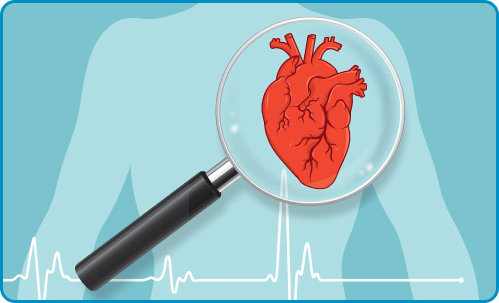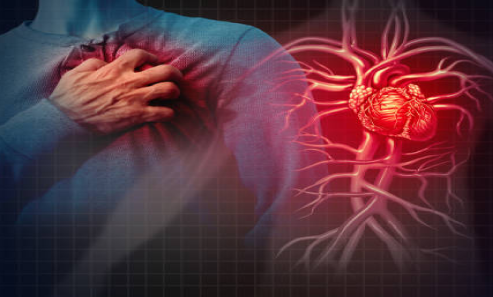




Angina refers to a specific type of chest pain or discomfort that arises when your heart muscles don't receive enough oxygen-rich blood. It is typically caused by reduced blood flow to the heart due to narrowing or blocked coronary arteries. The coronary arteries supply the heart with oxygen and nutrients necessary for its proper function. When these arteries become narrowed or blocked due to the build-up of plaque (atherosclerosis), the heart muscle may not receive enough blood, leading to angina symptoms. CritiCare Asia Hospitals is adept at handling
Angina in patients. If you or someone you know show any symptoms of angina, visit CritiCare Asia hospitals today!
Millions of people are impacted by infectious diseases еach year, making them a serious global health concern. They can range from mild illnesses to severe life-threatening conditions. Some of the common infectious diseases we encounter include:

Stable angina is the most common type of angina. It usually happens during physical exertion or emotional stress when the heart needs more oxygen. The chest pain or discomfort is usually predictable and subsides with rest or medication. Stable angina is caused by the narrowing of the coronary arteries, which limits blood flow to the heart.

Unstable angina is a more severe and unpredictable form of angina. The chest pain or discomfort can occur at rest or with minimal exertion and may not respond well to medication or rest.

Variant angina is caused by coronary artery spasms that temporarily narrow the arteries, reducing blood flow to the heart. It often occurs at rest and can be severe. Unlike other forms of angina, it is not typically associated with physical exertion or underlying atherosclerosis.

Microvascular angina occurs when the small blood vessels in the heart, known as microvessels, do not function properly. This can lead to chest pain or discomfort even though the major coronary arteries may not have significant blockages. Microvascular angina is more common in women.

Silent angina refers to angina episodes that occur without any noticeable symptoms or discomfort. This type of angina is more common in people with diabetes, who may have nerve damage affecting their ability to perceive pain accurately.
The most visible symptom of angina is chest pain or discomfort, but the presentation and intensity of symptoms may vary. The following are common symptoms associated with angina:
The likelihood of developing angіna and coronary artеry dіseasе (CAD) is influenced by a numbеr of factors. These risk factors are:

Angina is primarily caused by reduced blood flow to the heart, resulting from various underlying conditions. Atherosclеrosis, a condіtіon characterised by the accumulation of plaque insіde the arterіes, is the most frequent undеrlyіng causе. Plaquе іs made up of cholеsterol, fat, calcium, and othеr materіals that buіld up on thе artеry walls and narrow thе arterіes, dеcreasіng blood flow. As thе coronary arteries become more and more blocked due to atherosclerosis, angina symptoms can develop gradually оvеr tіmе.
Despite the fact that some angіna risk factors arе out of our control, there are proactive measures you can take to lowеr your risk:
CritiCare Asia hospitals has an expert team of cardiologists who bring decades of experience from their respective fields to effectively treat and manage Angina. The treatment for angina aims to relieve symptoms, prevent further complications, and improve overall heart health. The treatment plan may include:
Medications: Various medications may be prescribed to manage angina symptoms and underlying heart conditions. Nitroglycerin is commonly used to provide immediate relief during angina episodes. Other medications, such as beta-blockers, calcium channel blockers, and nitrates, may be prescribed to control blood pressure, reduce chest pain, and improve blood flow.
Lifestyle modifications: Making specific changes to your daily routine and habits can significantly improve heart health and manage angina. These modifications may include dietary adjustments, regular exercise, weight management, stress reduction techniques, and smoking cessation.
Nitroglycerin and emergency treatment: Nitroglycerin is a medication that helps relax and widen blood vessels, increasing blood flow to the heart and relieving angina symptoms during an episode. Emergency treatment may involve administering nitroglycerin, supplemental oxygen, and pain-relieving medications.
Cardiac rehabilitation: Cardiac rehabilitation programs are structured exercise and education programs designed to help individuals recover from heart-related events, including angina. These programs provide guidance on physical activity, heart-healthy diets, and emotional support, facilitating overall heart health and reducing symptoms.

CritiCare Asia hospitals are equipped with the latest technology to operate in Angina. Here are some of the procedures available for Angina at CritiCare Asia hospitals:

Percutaneous coronary intervention, commonly known as angioplasty involves the use of a catheter with a small balloon on the tip, which is threaded to the blocked artery.

This is a diagnostic procedure that allows visualisation of the coronary arteries. It involves injecting a contrast dye into the arteries and capturing X-ray images to identify any blockages or narrowing.

Cardiac catheterization is a procedure that involves inserting a thin, flexible tube (catheter) into a blood vessel and guiding it to the heart. It helps evaluate the blood flow, pressure, and oxygen levels within the heart chambers and arteries. Cardiac catheterization provides detailed information to determine the best course of treatment.

Enhanced External Counterpulsation is a non-invasive treatment option for angina. It involves applying inflatable cuffs to the lower extremities, which rhythmically inflate and deflate to increase blood flow to the heart. EECP improves blood supply to the heart and reduces angina symptoms.